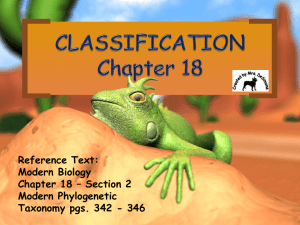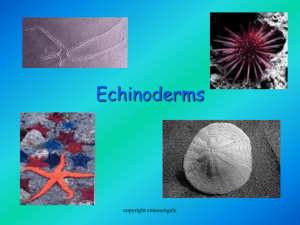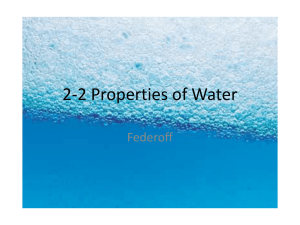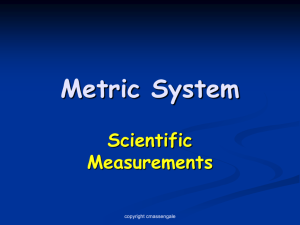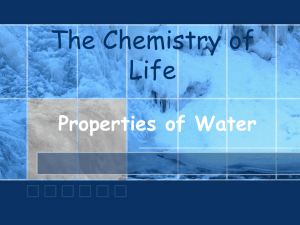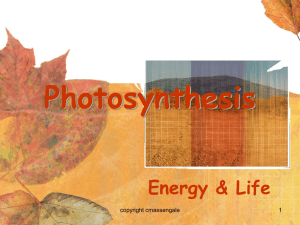The Chemistry of Life Properties of Water copyright cmassengale
advertisement
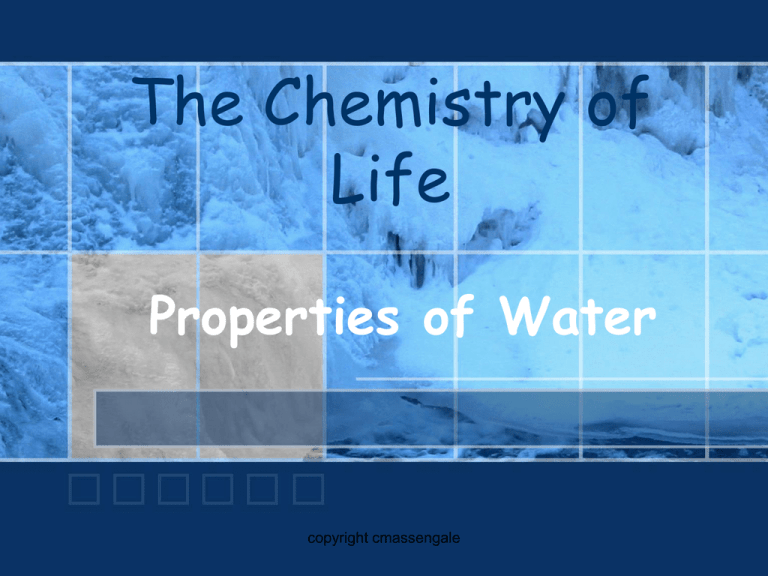
The Chemistry of Life Properties of Water copyright cmassengale The Water Molecule • Neutral Charge – ZERO • Have no charge • Have an Equal number of p+ and e• Charges aren’t evenly distributed copyright cmassengale The Water Molecule • Polarity – A water molecule is polar because there is an uneven distribution of electrons between the oxygen and hydrogen atoms. (+) (-) copyright cmassengale Hydrogen Bonds • Polar water molecules act like magnets and attract each other • Hydrogen Bonds – The attraction of the Hydrogen end (+) of one molecule for the Oxygen end (-) of another water molecule. • They are strong bonds that form between molecules (CO2, H2O, …) copyright cmassengale Hydrogen Bonds copyright cmassengale Cohesion • The attraction between molecules of the same substance (e.g. water). • H2O attracting other H2O molecules • Allows some insects and spiders to walk on water. copyright cmassengale Adhesion & Capillarity • Adhesion - Attraction between H2O molecules and different molecules • Cohesion & adhesion produce Capillarity (upward movement against gravity of water through small tubes) Question: How do plants make use of Capillarity? copyright cmassengale Solutions & Suspensions • Water is usually part of a mixture. • Because so many things dissolve in water, it is called the Universal Solvent • There are two types of mixtures: – Solutions – Suspensions copyright cmassengale Properties of Solutions • Ionic compounds disperse as ions in water (+ions & -ions spread out among polar water molecules) • Solutions are Evenly distributed mixtures • SOLUTE – Substance that is being dissolved • SOLVENT – Dissolving Substance for the solute copyright cmassengale Ionic Solutions Na+ ions will be attracted to WHAT END of the water molecule? copyright cmassengale Suspensions • Substances that don’t dissolve but separate into tiny pieces. • Water keeps the pieces suspended so they don’t settle out. • Blood & Cytoplasm are suspensions copyright cmassengale Acids, Bases & pH • 1 water molecule in 550 million naturally dissociates into a Hydrogen Ion and a Hydroxide Ion H2O H+ + OH Hydrogen Ion Acid copyright cmassengale - Hydroxide Ion Base The pH Scale • • • • • • Indicates the concentration of H+ ions Ranges from 0 – 14 pH of 7 is neutral pH 0 up to 7 acid … H+ pH above 7 to 14 base… OHEach pH unit represents a factor of 10X change in concentration How much stronger is a pH3 than a pH of 5? copyright cmassengale Acids • Strong Acid = pH 1-3 • High in H+ ions • Lower number of OH- ions copyright cmassengale Bases • Strong Base = pH 11 – 14 • High in OHions • Lower in number of H+ ions copyright cmassengale Buffers • Weak acids or bases that react with strong acids or bases • Made by the body • Prevent sharp, sudden changes in pH (keep pH neutral) Weak Acidcopyright cmassengale Weak Base copyright cmassengale


